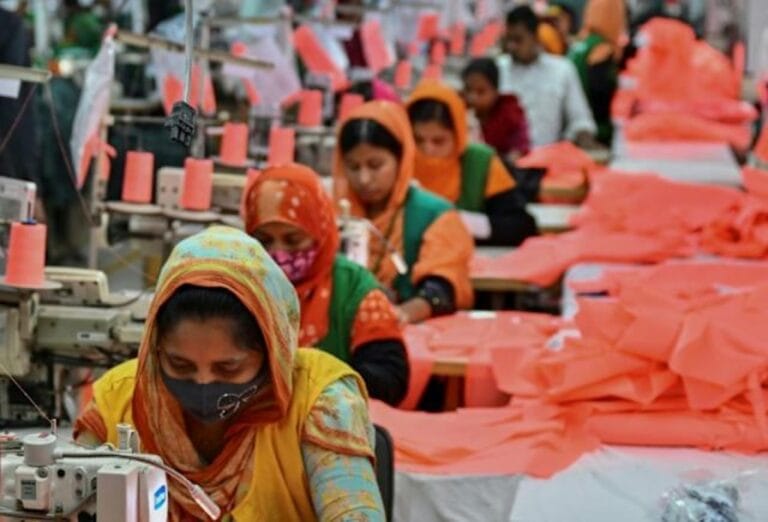🎧 Listen to This Article
DHAKA – Bangladesh’s ready-made garment (RMG) industry—the second-largest apparel exporter globally—is facing what insiders call a critical threat after the United States imposed a sweeping 37% tariff on imports from the South Asian nation. Industry leaders warn that the move could cause severe disruptions in trade flow, pricing, and competitiveness.
Lead & Context
Former BGMEA Vice President Rakibul Alam Chowdhury sounded the alarm on April 3, stating that the new tariff structure under President Donald Trump’s administration places Bangladesh at a sharp disadvantage compared to regional rivals like India and China, who face lower duties on textile exports to the U.S.
“It is a major threat for us,” Chowdhury said in an interview with The Business Standard. “Our competitors, India and China, will benefit from the new tariff structure as their rates are comparatively lower than Bangladesh’s.”
Sectoral Impact
The implications are far-reaching for a sector that contributes over 80% of Bangladesh’s total export earnings. U.S. buyers—who typically absorb duty costs—may shift sourcing to cheaper markets to maintain retail price stability. “If US buyers find that the added tariff increases the product price beyond their market threshold, they will seek alternative sourcing to minimise costs,” Chowdhury explained.
Concurrently, Bangladesh’s RMG sector is battling rising production costs amid wage increases and inflationary pressure. This double bind could erode profit margins and reduce the country’s competitive edge in the global supply chain.
The looming risk: order cancellations, slower contract renewals, and long-term erosion of U.S. market share.
Diplomatic and Policy Concerns
Chowdhury also pointed to a rarely discussed dimension: Bangladesh’s own tariff regime. “Imposing such a high [74%] tariff on U.S. products is unrealistic,” he said, noting that Bangladesh imports little from the U.S., but the symbolic imbalance likely triggered retaliation.
He urged the government to urgently reassess its trade policy and initiate diplomatic dialogue. “Otherwise, our RMG sector will be in serious danger,” Chowdhury warned.
Forward Outlook
The industry is now in damage control mode, holding discussions with U.S. buyers to preserve existing contracts. Whether these efforts succeed depends on two factors: Bangladesh’s willingness to recalibrate its tariff posture and the U.S. administration’s openness to negotiation.
With the U.S. election year in full swing and trade populism on the rise, policy flexibility remains uncertain. For Bangladesh’s $45 billion garment industry, the stakes couldn’t be higher.
For further details, clarification, contributions, or any concerns regarding this article, please contact us at editorial@tax.news. We value your feedback and are committed to providing accurate and timely information. Please note that our privacy policy will handle all inquiries



